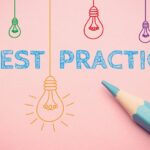There is often a battle that goes on in the mind of business owners when they need a website built for their local business. On one side, there is the pragmatic thoughts looking for a website that ranks highly and converts visitors to buyers in high numbers. On the flip side, there are often thoughts of grand designs and a website that is so stunningly beautiful that it becomes the talk of the town.
If you approach a professional agency and ask them to build you a website, they are likely to advise the former than the latter, especially if they are experts in SEO too. They know that a website that is a work of art might be good to look at, but if it languishes on page 10 because its structure and SEO are poor, nobody will find it anyway.
As a business owner, it is not necessary for you to become an expert in website design. However, there are huge advantages to knowing some key factors that can make a huge difference in a website’s performance. Armed with this knowledge, you can more easily discuss your objectives and ascertain whether the agency can create the website you require.
Let’s start with one factor that hardly any business owners know regarding how it affects their website and its ranking. That factor is site speed, the term used for how quickly a website loads when someone clicks on it and thereafter, as they use it. We mention this first because site speed is especially important because it influences other factors affecting website rankings.
A site that loads slowly will mean some visitors leave almost immediately, and that ‘bounce,’ as it is called, is noted by Google. High bounce rates mean a downgrading of rankings. A slow site will discourage visitors from hanging around, and the overall length of time anyone spends on your site during a visit is also a ranking factor.
Site speed also has implications for the ability of your site to generate leads and customers. If it is sluggish, it’s not a great experience for your potential customers and could mean they seek out a website where pages load much quicker.
Now that you know how important site speed is for the performance of your website, you can discuss what steps your website design agency will take to ensure it is optimised.
A website design element that is overused is one you will likely have seen yourself when you are online, and that is having a carousel of images. They are hugely popular with business owners because the images scrolling past look impressive, but the fact is they are a complete waste of time.
The reason is simple: research shows that the front image is the only one that gets any clicks. In other words, unlike website owners, visitors are far from impressed with carousels.
Your website should have a purpose, although the specific purpose of each page within it may differ. That purpose will likely require the visitor to take some kind of action, such as clicking through to a sales video or entering their telephone number in a contact form, for example. Regardless of the action, your web design needs to encourage visitors to do it.
That encouragement shouldn’t come in the form of some horrible pop-up with huge letters saying, ‘CLICK HERE’. Instead, it is cleverly done with the use of visual cues. These cues direct the visitor’s attention to an area of the page that you want them to focus on and when they’re more likely to take the action you want them to.
The cues can be obvious, such as an arrow pointing towards an element on the page, or it can be very subtle. The most common of these is to have an image of someone that is looking in the direction of the desired page element. It has been proven using eye maps that detect where someone is looking at on the website that works.
If you compare the eye maps, where an image on the page of a person looking at something, with the same page without that image, then there is a huge difference in favour of the former. So, if you want your visitors to take specific action on your website, make sure its design considers this.









